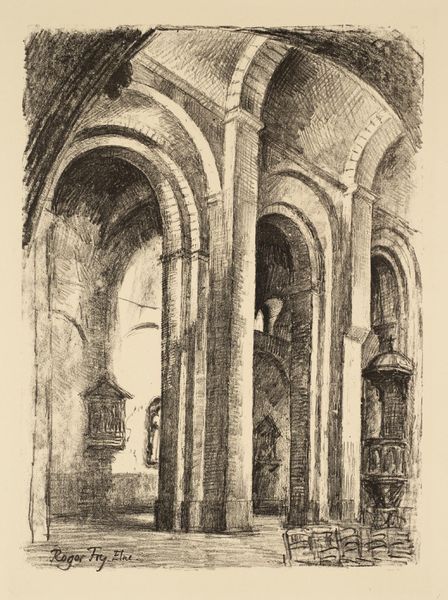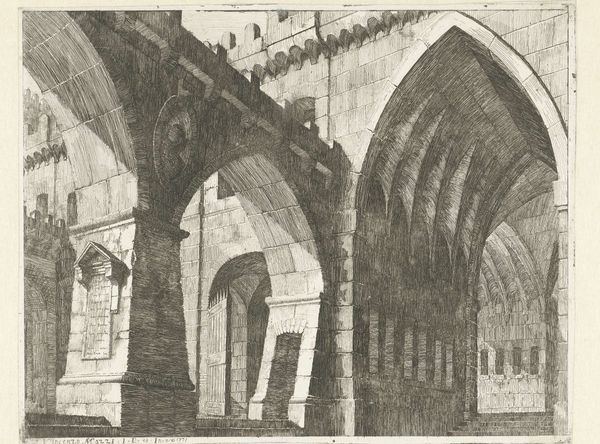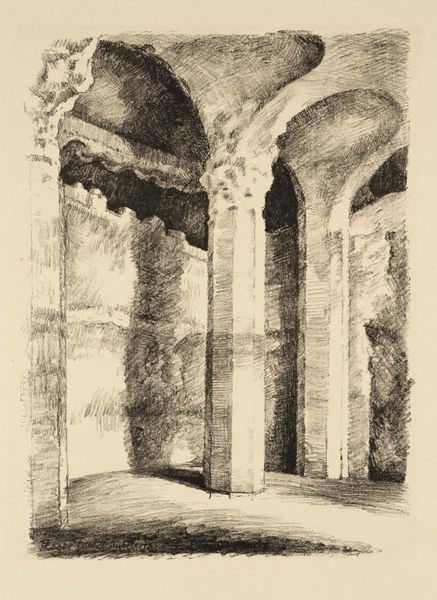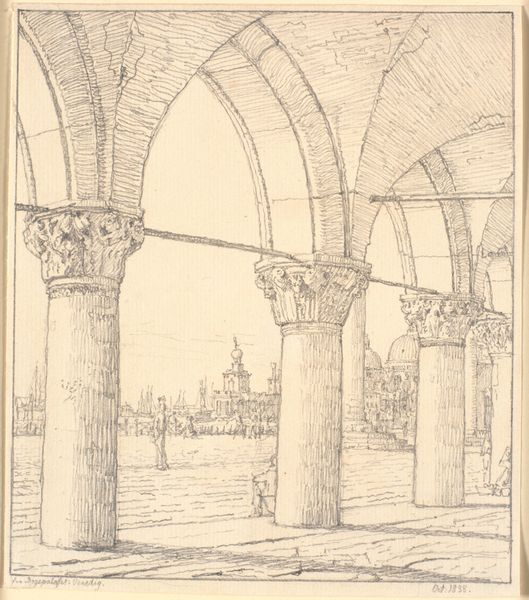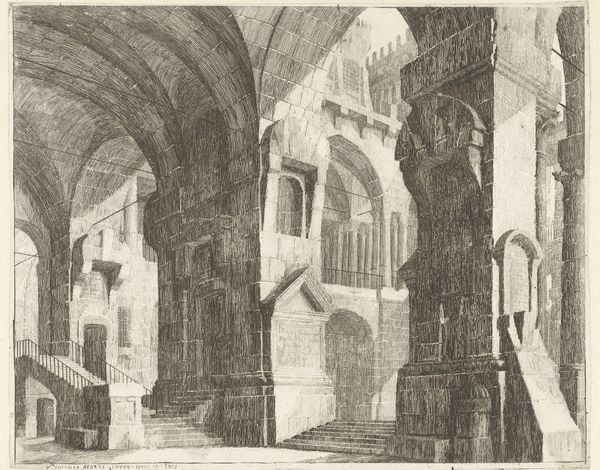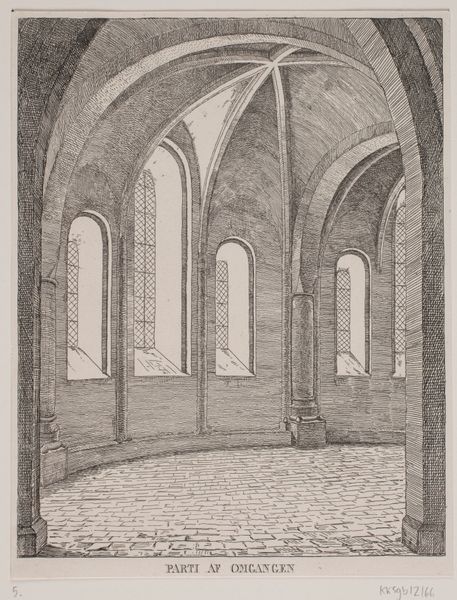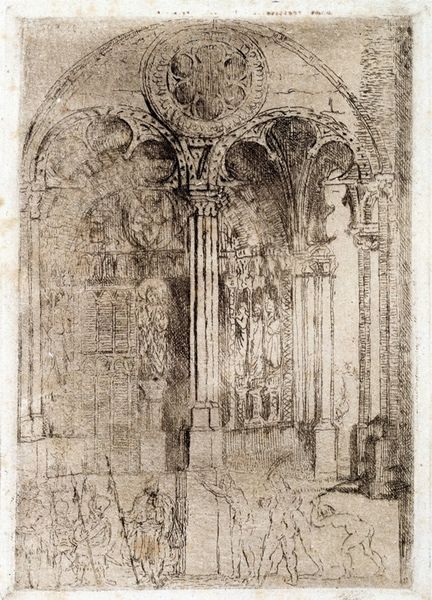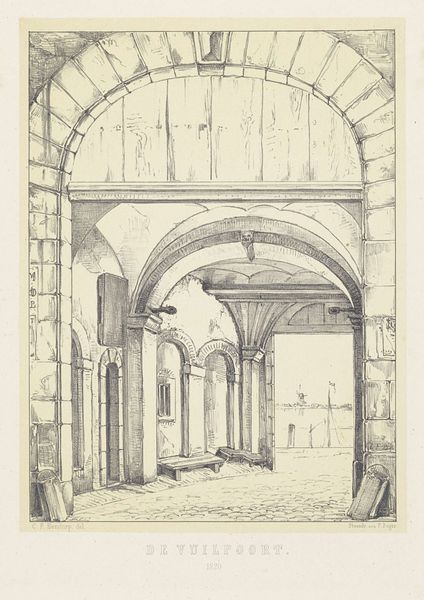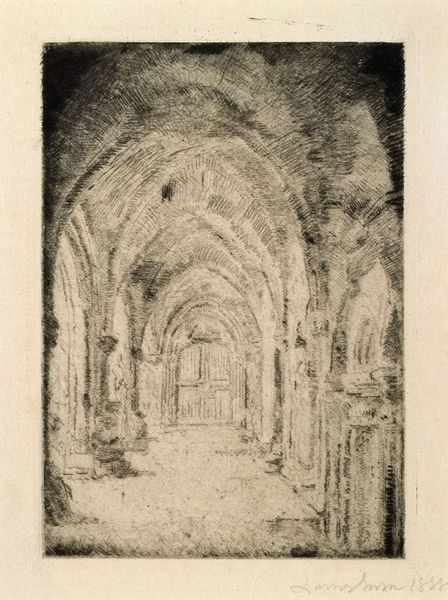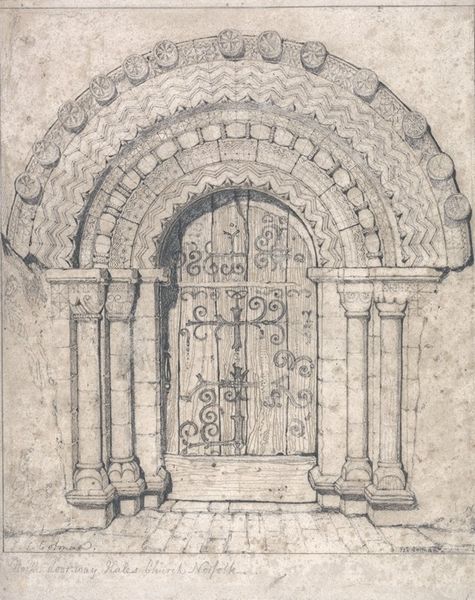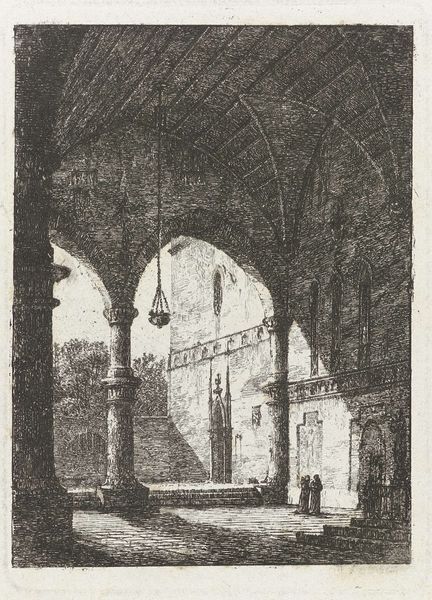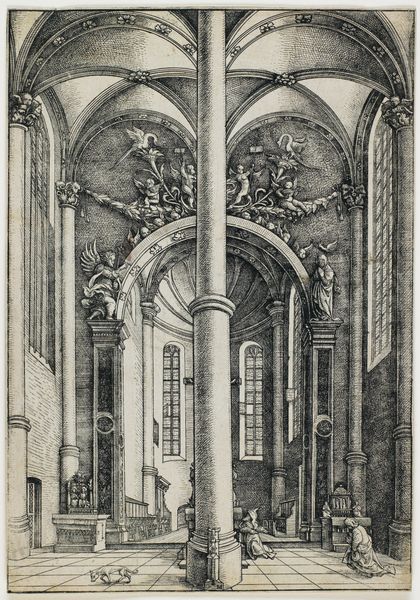
drawing, ink, architecture
#
drawing
#
perspective
#
ink
#
geometric
#
column
#
sketch
#
pen-ink sketch
#
arch
#
line
#
architecture
Copyright: Public domain
Curator: This sketch is titled "In the castle" created by Nicholas Roerich in 1913 using ink on drawing paper. Editor: My immediate reaction is one of claustrophobia, despite the grand architecture. The intense linearity, the sheer repetition of the arches, feels… oppressive. Curator: Oppressive how? Consider the material circumstances. Roerich’s choice of ink, a readily available medium, aligns with a desire for accessibility, a challenge to the elitism often associated with "high" art. Also, this work precedes World War I, a period of rising social tensions and political unrest reflected in art by a turn to somber, enclosed settings. Editor: Perhaps. But formally, those tightly packed lines—especially in the vaulted ceilings—they create a strong sense of enclosure. The limited tonal range only enhances that feeling. And the lines don’t describe form as much as they construct an almost tangible barrier. It is as though the lines, acting as semiotic devices, build literal and emotional confines for the observer. Curator: It could be argued that his rapid sketching technique captures the provisional, makeshift nature of early 20th century life. The unevenness and asymmetry mirror broader anxieties around stability. Roerich worked across stage design and set design which heavily informed his application of perspective here and offers insights into social constructions of theatrical or imagined spaces. Editor: I see the value in considering Roerich’s set designs, yet the sketch feels like more than mere architectural representation; it presents an internal, psychological space. The exaggerated perspective and strong light/dark contrasts seem less about structural accuracy and more about manipulating mood. I wonder, does this castle signify safety, refuge or, as I perceive, isolation? Curator: Considering Roerich's background and the political climate, it would not be far fetched to consider his exploration of safety and refuge during turbulent periods for Eastern European artisans and laborers. These architectural details also speak to shifting dynamics between modern manufacturing versus time-worn and handcrafted elements. Editor: We can perhaps agree that regardless of intention or broader socio-political readings, formally the sketch uses bold linearity and striking perspective to deliver a complex and psychologically interesting scene. Curator: Yes, offering diverse ways of approaching this representation of confinement and artistry.
Comments
No comments
Be the first to comment and join the conversation on the ultimate creative platform.
